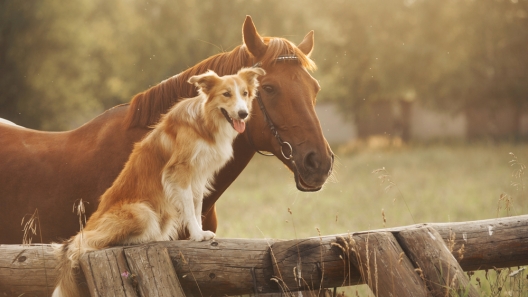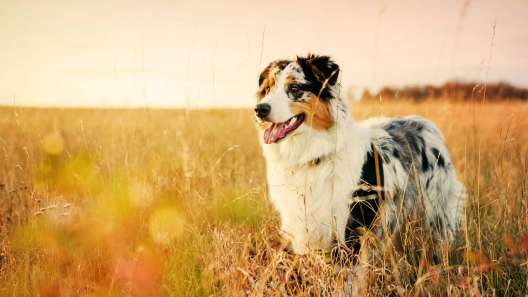-
Activity Level:
high
-
Shedding Level:
moderate
-
Grooming Level:
low
-
Trainability:
high
-
Good for Novice Owners:
moderate
-
Adaptability:
moderate
-
Kid/Pet Friendly:
often
-
Prey Drive:
high
-
Watchdog:
very alert
- Average Size: Medium
- Average Lifespan: 12-16 years
- Registered?: aca, akc
Blue Heeler – Australian Cattle Dog Dog Breed Information
Overview
Temperament
Adaptability
Health
Owner Experience
Grooming
Activity Level
Size
Life Span
Did You Know?
Known as the Blue Heeler, or the Australian Cattle Dog (ACD), this breed hails from Australia and can trace its roots all the way back to the wild Dingo. They were bred specifically to drive cattle over long distances and often across rough terrain. They received their “Heeler” nickname due to their common habit of nipping at cattle’s heels to herd them.
These dogs are most well-known in the United States by their Blue Heeler or Australian Cattle Dog names, but they are also sometimes called Australian Heeler, Queensland Heeler, and Halls Heeler. The American Kennel Club (AKC) officially recognized the Australian Cattle Dog in 1980 and the ACD was a charter member of the Herding Group when it was established in 1983.
Blue Heelers are affectionate with their human families – and other pets too. Sometimes called a “velcro” dog, the Blue Heeler gets close to their owner and family quickly, but they will also tend to bond with one person much more closely than any other in the family.
These dogs tend to be brave, loyal, and friendly to children and other dogs in the family. They can have a high prey drive so will need socialization and training around other pets in the household. When it comes to strangers, they tend to be cautious, watchful, and aloof. Their protective nature puts them on alert. As long as they are properly socialized, they will warm up once introduced.
Australian Cattle Dogs tend to be moderately adaptable dogs. Between their high energy and working dog nature, they don’t tend to do well in apartments and are a much better fit for homes with fenced yards where they can run. As one of the best dog breeds for farms, they also thrive in agricultural settings.
Although they have short coats, these dogs do well in most climates. They are sensitive to heat. They can handle some cold, but are not a cold-weather or snow dog breed. Blue Heelers bond closely with their families, which means that they do not like to be left alone for long periods of time.
Potential health concerns to be aware of in an Australian Cattle Dog can include elbow dysplasia, hip dysplasia, progressive retinal atrophy, and deafness. Good breeding practices make a big difference in the health of puppies.
Reputable breeders will screen their dogs to avoid passing preventable issues to puppies, so make sure you ask about the health and genetic history of both parents. You can also ask about any health tests or clearances that have been done.
The Blue Heeler is an energetic and highly intelligent working dog. As one of the smartest dog breeds, they do not have any issues picking up commands quickly. But, this does mean that they get bored easily and need training to be kept interesting.
As a classic working dog, they need a job to do to be happy and healthy. Their high energy can be an obstacle for first-time owners, so puppy training classes are recommended. In addition to better training techniques, there are also socialization opportunities and other benefits of puppy training classes.
An Australian Cattle Dog’s coat is short, smooth, and water-resistant. They do have a double coat and they will shed their undercoat twice a year. Brushing a few times a week and an occasional bath are usually enough to keep this dog’s coat healthy and looking great.
More frequent brushing is recommended when they shed their undercoat. It’s not a bad idea to make sure you have a short-bristle brush and a shedding blade in your collection of dog grooming brushes.
In addition to coat care, you will also need to take care of your Blue Heeler’s nails, ears, and teeth. Nail trims once or twice monthly keep nails from growing too long. Weekly ear checks with careful cleanings as needed help prevent ear infections. Daily tooth brushing in addition to cleanings at the vet when needed can help prevent painful dental diseases later in life.
The Australian Cattle Dog is a high-energy working dog. They need a lot of daily activity and a job to do to be happy and healthy. Daily walks plus some playtime, time to run, and other activities are usually enough, but they will likely be up for more activity if you are.
These dogs are athletic and versatile working dogs, so once they are finished growing, you can try a lot of different activities with them. They’re known for being one of the sturdy dog breeds for outdoor adventures and also a great candidate for a variety of dog sports.
A fully-grown Blue Heeler usually stands 17-20 inches tall and weighs 35-50 pounds.
Australian Cattle Dogs generally live for 12-16 years on average.
One of the facts about Blue Heelers is that Heeler puppies are born with a white coat that turns into the blue-gray “Blue Heeler” or the red “Red Heeler” coat.
Both varieties feature the distinctive speckled or mottled patterns that Australian Cattle Dogs are known for. Australian Cattle Dog puppies usually develop their coat colors after a few weeks and the patterned coat should be coming in clearly by around 6 weeks.









